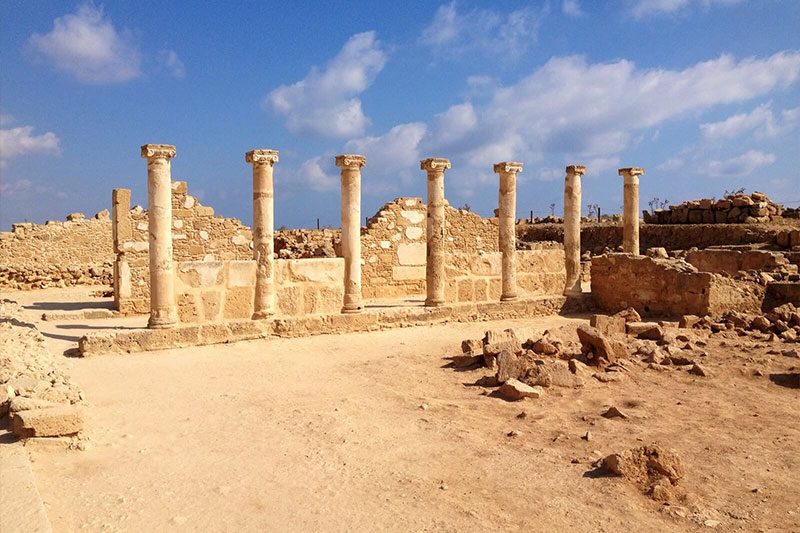The city of Paphos is located by the sea in the south-west of Cyprus. The ancient capital of the island is the oldest historical and cultural center. The homeland of Aphrodite is famous for the clearest sea, narrow streets and wonderful places for fishing. Green mountains add to the picturesque overall panorama. In the second century B.C. the city lived and prospered. It was crushed many times by natural disasters and all the time he was restored in a short time. But once in the 4th century it was so destroyed that it literally froze until the 20th century. After 1974, Pafos began to be actively restored. Huge investments were made and it is now the third resort center of Cyprus with an international airport.
The ancient majestic sights are breathtaking. In the Tomb of the Kings are buried royalty from the Roman and Hellenic era (3rd century BC – 3rd century AD). We will visit with you the Roman Villa of Dionysus, included in the list of UNESCO. Its main features are numerous images of the god of winemaking and the floor, completely decorated with mosaics. The mosaics are so beautiful that they are called the most beautiful mosaics of the Eastern Mediterranean.
Near the Roman acropolis is the castle of the Forty Columns (“Saranta Colones”). The deep moat, granite columns, and corner towers gave the imposing structure a majestic appearance. Unfortunately it was completely destroyed by an earthquake in 1222. In the ancient Odeon Theatre you can still enjoy the unique atmosphere of the various shows and concerts, just as you did in those early days. Archaeological Park introduces you to the buildings of different eras. The halls and courtyard of the Sanctuary of Aesculapius used to be a healing place. We will visit the Catacombs of St. Solomonia. Here, seven of her sons were murdered in front of their mother’s eyes. This cave is like a healing complex – the holy spring takes away all diseases if you wash your eyes with its water, or you can take a piece of cloth, put it on a problem spot on your body, and then hang it on a branch of a pistachio tree near the entrance to the Catacombs. After the cloth has decayed and the problem is gone.
Paphos holds many Christian shrines. The Church of Chrysopolytis was built in the 12th century. According to legend, the apostle Paul, for spreading Christianity, was tied to one of the columns near the temple and mercilessly tortured. Today the column is a revered relic.
Naturally, during your stay in Paphos you must go to Aphrodite beach and swim by the famous stone, take pictures against the snow-white lighthouse and stroll along the picturesque promenade in the evening.

